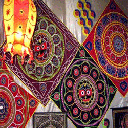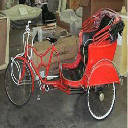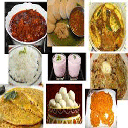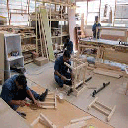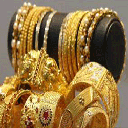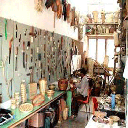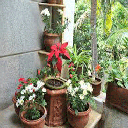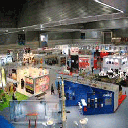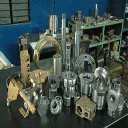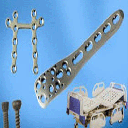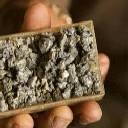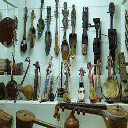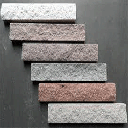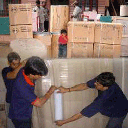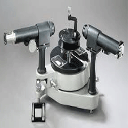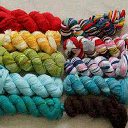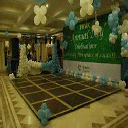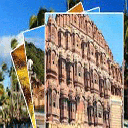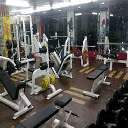India's smallest state by area and the fourth smallest by population. Located in South West India in the region known as the Konkan, it is bounded by the state of Maharashtra to the north, and by Karnataka to the east and south, while the Arabian Sea forms its western coast. Goa is India's richest state with a GDP per capita two and a half times that of the country as a whole.It was ranked the best placed state by the Eleventh Finance Commission for its infrastructure and ranked on top for the best quality of life in India by the National Commission on Population based on the 12 Indicators. The Goa, Daman and Diu Official Language Act, 1987 makes Konkani in the Devanagari script the sole official language of Goa, but provides that Marathi may also be used "for all or any of the official purposes". The Government also has a policy of replying in Marathi to correspondence received in Marathi. Whilst there have been demands for according Marathi and Konkani in the Roman script co-equal status in the state, As of October 2008, Konkani remained the sole official language. Panaji is the state's capital, while Vasco da Gama is the largest city. The historic city of Margao still exhibits the cultural influence of the Portuguese, who first landed in the early 16th century as merchants and conquered it soon thereafter. The Portuguese overseas territory of Portuguese India existed for about 450 years until it was annexed by India in 1961.[4][5] Renowned for its beaches, places of worship and world heritage architecture, Goa is visited by large numbers of international and domestic tourists each year. It also has rich flora and fauna, owing to its location on the Western Ghats range, which is classified as a biodiversity hotspot.
Location : Loutulim, 10-km From Margao, Goa Ancestral Goa situated at Laoulim, 10-km from Margao, ancestral Goa is a mock up village dating Back a century. Built in a green hillside, a guided trek takes one down the Goan memory lane. Amidst a variety of rare wild flowers and mushrooms, a variety of exquisite insects and mushrooms and birds are also sighted. A species of frog, now almost extinct, which was once a Goan delicacy, might also hop out along the trail. The Hangout Places This sprawling village has a natural spring, a fisherman's hut, marketplace, mansion of 'Dona Maria' and customary Goan artisans at work. One can end by the 'Traverena', the country liquor shop, warm up with a peg of Goan Feni distilled at the 'Bhatti' and play an ancient game of 'tabla' or sit on mud benches in the verandah of the farmers' house relishing roasted seeds and other Goan eats. Food & Merriment Local feasts and festivals are celebrated with traditionsl style and fervour.A visit to Ancestral Goa on any of the fest days, allows for a pure-experience of Goan customs and lifestyles. The Eat-out offers a menu full of traditional Goan Specialties. Local vegetables, fish and sweets are treats to be indulged in. Other Attractions Ancestral Goa, Ancestral Goa historical, Ancestral Goa travel, Ancestral Goa tourism, Ancestral Goa Historical PlaceAnd while one walks around one can also visit a national landmark, 'Natural Harmony' - the longest laterite monolithic sculpture that carved its way to fame in the Limca book of records. One can also boogey on a giant footstep, 'Big Foot' - Goa's major designer dance floor. Fanking this is the handicrafts fair displaying local and folk arts. There is also a 'spice yard' nearby. Location : Old Goa In Performance : 1964 Maintained By : The Archaeological Survey of India (ASI) Exhibits : Gallery Of Portraits of Portuguese Viceroys, Coins, Domestic Wooden Sculpture, Pre-Portuguese Hindu Sculptures This used to be a wing of the old Franciscan monastery and was converted to a museum in 1964. On exhibit are a selection of pre-colonial and post colonial artifacts. The main hall has at its entrance a huge statue of Alfonso de Albuquerque, that once stood in Old Goa and subsequently at the Azad Maidan in Panaji. It was removed after liberation to the museum. The other areas are the "Key Gallery", the " Portrait Gallery" and the "Sculpture Gallery". The "key gallery" has among other things a statue of the famous Portuguese poet, Luis Camoes, holding a copy of "Os LusÃadas". This statue was also moved to the museum following liberation. The " Portrait Gallery" occupies the first floor of the museum and has over sixty paintings of the Portuguese Governors and Viceroys that ruled Goa beginning with the first- Dom Joao de Castro( 1545-48 ) and other notables like Dom Vasco da Gama ( 1524) and the only Goan Governor, Bernardo Peres da Silva ( 1835 )and the longest serving governor, Jose Ferreira de Pestano ( 1844-51 and 1864-70). There is even a portrait of Portugal's right wing prime minister and dictator, Antonio Salazar. The "Sculpture Gallery" contains some artifacts dating to the pre-colonial era. There are a lot of Stone sculptures and idols dating back to the Kadamba years and also a stone pillar brought from San Thome, Madras , the site of martyrdom of St Thomas Rejuvenating The Look The Museum was rearranged and reorganized completely in connection with the CHOGM Retreat in Goa mean while 1982. A long hall lying to the left side of the entrance to the Museum was converted into 2 galleries by laying RCC floor with a newly constructed wide staircase at the extreme west to facilitate access to the first floor. The new Annexe building thus provided additional area to the existing Museum and finally the entire first floor re-laid with a teakwood floor resembling the original in order to bring uniform look to the whole complex. The 3-6m high bronze statue of Afonso de Albuquerque greets the visitors at the entrance. In the visitors lobby sea routes of early explorers, map showing site museums in India, map of Goa and a few photographs of monuments of Goa and Daman , and map showing centrally protected monuments in India are on display. Displaying Some Priceless Possessions The important exhibits on display in this Gallery are the standing Lord Vishnu accompanied by Goddess Lakshmi and Garuda on left and right respectively, with exquisite carvings accommodating ten incarnations on the Prabhavali, standing Surya accompanied by Danda and Pingala, Gajalakshmi, Mahishasuramardini and seated Uma-Maheshvara. Archaeological Museum, Archaeological Museum historical, Archaeological Museum travel, Archaeological Museum tourismThe Gallery Showcase 2nd, 3rd, 4th, 5th Galleries Gallery 2,3,4 and 5 are located in the quadrangle in the ground floor. In Gallery 2 are displayed models of various types of Shikharas, replica of pillar, architectural pieces, a Shiva-Linga and a 'Nandi'. In Gallery 3 are displayed seated Ganesa, Mahishasuramardini, standing Vishnu with Garuda, Vetala, seated Uma-Maheshvara with Kartikeya, Bhringi and Ganesha on the pedestal, Hanumana, Kala Bhairava, Indrani and torso of a Hindu saint. In the showcase minor objects i.e., the head of Brahma, head of Nandi Kula Devata and architectural pieces are on display. In the adjoining room are displayed model of a 16th century Portuguese ship and iron anchors. In Gallery 4 are displayed medieval hero-stones, sati-stones, a Shiva-Linga and a panel depicting self-immolation. The sati stones displayed along side the hero-stones, commemorate 'Sati' or widow burning and have panels showing the heroes in battle, thus serving both as hero and 'Sati' stones. In Gallery 5 are inscribed slabs in Marathi, Arabic/Persian pertaining to Ibrahim 'Adil Shah and other 'Adil Shahi kings of Bijapur of 16th-17th century. The Marathi inscriptions record grants to Hindu temples, while the Arabic/Persian inscriptions record the construction of a Masjid (Mosque) and a bastion to the fort at Old Goa. A huge stone panel on the other side of the verandah depicts a coat of arms in the centre and St. Peter and St. Paul proclaiming the gospel and a Portuguese inscription on either side. In the niche of the wall is a stone pillar brought from Santhome, Madras in AD 1630. A piece of the iron of the lance with which the St. Thomas, the apostle, was supposed to have been killed was preserved in a small niche at the top of the pillar. The two sides of the pillar are painted with the figures of St. Thomas and St. Francis of Assisi. In the centre of the open courtyard, life-size image of St. Catherine is displayed under a Goan type pillared shed. The courtyard has been improved by laying lawns and laterite paved pathways with specially designed grills. Display Of Beautiful Canvas Paintings - Gallery 6 The first floor is divided into three galleries each with a closed verandah. In Gallery 6, the visitor can have a glance at the short history of the paintings of Governors and Viceroys of Goa, before they proceed to appreciate a large number of portraits on wood and canvas. The viceroy Dom Joao de Castro, initiated and ordered paintings of portrait of his own and also of twelve predecessors. This practice continued till the end of the Portuguese rule in India in 1961. These portraits are painted either on wooden planks or on canvas and in oil colours. A short label is also fixed to each object in slanting position at the bottom indicating the name and the regnal year. They were painted by local artists and have been subjected to restoration or repainting on many occasions. These paintings, originally decorating the walls of different residential mansions of the Governors and Viceroys, were shifted from the Secretariat, Panaji to the Museum in 1962 to make them available for public view. Many of these paintings are of life size and provide an interesting study in the evolution of contemporary costumes and hairstyle of Europe and give an idea of the different coat of arms besides their individual personalities and appearances. Two wooden screens kept in the gallery have been utilised for exhibiting painting of Vasco-de-Gama, list of Portuguese Governors/Viceroys, map of Goa, postal, revenue and court fee stamps of Portuguese India. The Coin & Currency Collection In the vertical type coin showcase are exhibited the Portuguese currency and silver /copper/lead/brass coins. Afonso de Albuquerque ordered minting of coins soon after his conquest of Goa in AD 1510. The major denominations include the Portuguese Manoel, Leal and the indigenous Pardav, Tanga, Xerafins, Rupia, etc. The most common type of coin is the one with holy cross or king and queen on the obverse along with a circular legend and year and coat of arms on the reverse. The first paper currency was issued sometime in 1882. The currency notes usually show the image of Afonso de Albuquerque on the right side with the legend BANCO NACIONAL ULTRAMARINO and INDIA PORTUGUESA and denominations on obverse and sea motif on the reverse. The denominations are 10, 20, 30, 50, 60, 100, 300, 500, 600 and 1000 Escudos or Rupias. In this gallery, wooden sculptures of Jesus, St. Francis XArchaeological Museum, Archaeological Museum historical, Archaeological Museum travel, Archaeological Museum tourismavier, St. Joseph and other Christian Saints are also on display. A model of the fort of Diu is on view in this gallery. In the chapel on the southern wall is a painting depicting Mary descending from the Heaven, accompanied by children and few Saints on the earth. The wooden frame and the borders of this painting were decorated and gilded. In Gallery 7 are displayed the portrait paintings of Governors/Viceroys. In the showcase are exhibited the plaster cast bust of Philippe Bernado Guedes, Governor, on one side and the wooden statue of St. Peter on the other side. In the verandahs are displayed some religious paintings and wooden sculptures of Christian Saints, etc.; the vast verandah on the eastern side of the first floor, is used to display huge panel paintings depicting the martyrdom of Jesuit priests. A wooden screen has been provided in this gallery to break monotony and the space on this screen has been used for display of paintings of Governors. Gallery 8 In Gallery 8 are displayed the paintings of Governors/ Viceroys, President of Portugal and Dr. Salazar, the prime minister of Portugal during whose time Goa was liberated by Indian army on 19th December 1961. In a small niche on the northern wall is the bust of Queen Maria da Glorida of Portugal. A photograph of Vassalo-de-Silva, the last Governor General is on display. These paintings have been barricaded by providing a brass chain railing to prevent visitors from handling the paintings. There are also on view life-size wooden sculptures representing Mary Rosary and St. Peter in this gallery. In the verandah, wooden sculpture of Jesus Christ and paintings on wooden and canvas depicting the life scenes of Jesus viz., his birth, trial, crucifixion and his descent from the cross are on view. In the showcase are displayed Portuguese arms like rifles, swords, a dagger and a few stone and iron canon balls. In front of the Museum building are exhibited six canons of different sizes. Timings : Open Daily Except Fridays From 10.00 am To 5.00 pm. (without lunch break). Location : Panaji, Goa Exhibits : Temple Sculptures, Hero Stones, Colonial Era Artifacts, Jain Bronzes, Photos Of Pre-Historic Rock Carvings Timings : 9.30 am To 1.00 pm And 2.00 pm To 5.30 pm. Closed On : Saturday, Sunday & Public Holidays. The Museum of Goa is housed at a new Building at the Patto Plaze near the ourem creek, Panaji. It exhibits ancient epigraphs, stone sculptures, bronze panels, wooden panels, miniature paintings, old manuscripts etc. The sections include Ancient History and Sculptures; Geology, Coins and manuscripts; Anthropology and Western Art. It isproposed to expand it into eight galleries by adding Picture Gallery, Agriculture, Forestry and Natural History. The Exhibits:The only rarities to be found amid the lame array of temple sculpture, hero stones and dowdy colonial era artifacts (also spelt as artefacts) are a couple of beautiful Jain bronzes rescued by customs and excise officials from smugglers and, on the ground floor, photos of the prehistoric rock carvings at Usgalimal. Location : Opposite Fort Aguada Built In : 1540 AD Significance : Residence Of The Governor Of The State Built in 1540 AD reverse Fort Aguada on the south headland of the river Mandovi, the Cabo (the Portuguese word for cape) Palace fortress housed the Franciscan monastery, which later (1594 AD) became the official residence of the Governor of Goa. Holding the most panoramic view one can witness in Goa with the Indian Ocean towards the west, the Bay of the river Mandovi and Fort Aguada on the north and the busy port of Mormugao. Remaining unhabitated and isolated for centuries, it is supposed some human habitation must have been present over here but because of its enclosure in a dense wilderness, no signs of earlier settlements found. The beauty, solitude and uniqueness and well-planned features are some of the main attractions of the Cabo. A small Chapel was constructed at the very end of the mansion dedicated to Our virgin lady of The cape (Nossa Senhora do Cabo). It also served as a landmark for the seafarers. The Construction Of The Fortress The exact date about the first construction of the fort is not known but in a lately discovered note dated 30th June 1541, there was a proposal to locate a Franciscan priest at the chapel, which already existed. In 1540, the eighth Governor, D. Estevao de Gama, proposed the idea of constructing some fortifications at the mansion site to guard the entrance to both the Mandovi and Zuari rivers. The Cabo was converted into one of the best equipped and important fortresses over the years. Making Of The Monastery In the meantime, the chapel caught the attention of the Viceroy D. Matias d Albuquerque (1591-97) who became one of its committed devotees. He was a protector of the reformed Franciscan friars known as "Recollects". The Viceroy decided to rebuild the chapel and also constructed a monastery beside it. He paid all the expenses involved in its construction. He even imposed a condition that the Franciscans would look after the chapel and if by any chance they have to leave the place, it would be handed over to the archdiocese for proper maintenance. The foundation of the monastery was laid started of on 5th February 1594 by Bishop de Santa Maria and was completed within the period of six months only, exactly on 14th July 1594. The whole construction was done with laterite stones, which is available at the site. The Cabo is on a rock of laterite and it was extracted from the rocky peninsula on the spot. The pits formed from the extractions of stone were then covered to form cisterns to which rainwater was carried via the sloping roofs of the edifices. This provided excellent storage tanks for water. This system was also carried out in various other forts present in Goa. The Present Raj Niwas The Cabo Palace is now known as the Raj Bahavan, the official Cabo Palace, Cabo Palace historical, Cabo Palace travel, Cabo Palace tourism, Cabo Palace Historical Place, travel to Caboname given to the residence of the Governors of the States In India. It is also counted among the finest residences of Indian Governors and is indeed the oldest as no other residence of a Governor of a State in India had its origin to over four hundred years in the past. The official reception area consists area consists of a large hall called the Darbar Hall, used at the time of receptions and swearing in ceremonies and other official occasions. The Dining room has a seating capacity of over 30 persons. The living quarters of the Governor and his family are on the same floor. A glossy verandah runs along the entire portion overlooking the Mandovi Bay and the Arabian Sea giving one a feeling of being on a ship's deck. There are three suites and seven double rooms for guests. The offices of the Governor, his secretariat and staff are located on the ground floor in a separate annex. Collectibles Within The Palace The Raj Bhavan has a fine collection o Bohemian chandeliers, Chinese porcelain, silver and furniture. The most remarkable are the beautiful pieces of antique Chinese porcelain presumably manufactured in Canton. There is also a worn-out set of crockery having a similar design with same coat of arms. All these had been specially ordered for the use of the Portuguese Governor General. There is also an excellent collection of high quality wooden furniture with exquisite workmanship. A set of intricately carved chairs are simply remarkable for the fact that Hindu Gods and Temples have been carved on them. In the later centuries complete harmony between Christians and Hindus was very evident in Goa. Location : Goa Built By : Adil Shah Of Bijapur Also Known As : Shahpur Nearby Attractions : Vagator Beach & Anjuna Beach After the Portuguese had won their rule in Goa the warning from Muslim and Maratha rulers went on. To protect themselves, the Portuguese built the Chapora fort in 1617. However, unlike the Aguada fort, this fort did not remain unconquered and the Portuguese troops surrendered to the Maratha ruler, Sambhaj in 1684. The locals were not too pleased with this and had a number of conflicts with the Marathas and finally in 1717, the Marathas withdrew their force and the Portuguese again took over and rebuilt and added to the fort. The new structure was equipped with underground tunnels that ensured a safe getaway in case of an emergency. This idea although good didn't stop it from being invaded again and in 1739 the Marathas captured the Chapora fort again. However, two years later, in 1941, the Portuguese regained Chapora when the northern taluka of Pednem was handed over to them. However, in 1892 the Portuguese completely abandoned it and today only ruins remain. Though, there isn't much to see, the history lingers on. Marmagao Fort, Marmagao Fort historical, Marmagao Fort travel, Marmagao Fort tourism, Marmagao Fort Historical PlaceLocation : Mormugao, Goa Nearby Attraction : Marmagoa Harbour Attractions Within The Fort : Bulwarks, 3 Magazines, Five Prisons, A Chapel And Guards Quarters Guards Quarters 33 kms from Panaji; Four kms from Vasco da Gama, one of the well-known natural harbours on the west coast of India and the hub of intense maritime activity. Passenger and cargo ships call here from all over the world. This fort near the internationally famous Marmagoa Harbour was built to guard the harbour situated near the Vasco da Gama town. Its work started in 1624. It enclosed a region of six miles in circumference, contained towering bulwarks, three magazines, five prisons, a chapel and quarters for the guard. It had 53 guns and a garrison with 4 officers, and was an important fortress on the western coast. unluckily, except the chapel and a portion of the boundary wall, little is left of this fort. Location : Rachol Seminary, In Salcete Taluka, 7-km From Margao, Goa Established In : 24th January 1994 Exhibits : Sacred Art Objects Of Christian Traditions Set Up By : The Indian National Trust For Architecture And Cultural Heritage And The Gulbenkian Foundation Of Portugal Asia's first special Museum of Christian Art was opened at Rachol academy, located about 7-km eastwards of Margao in Salcete Taluka on 24th January 1994. The Calouste Gulbenkian basis of Lisbon, Portugal hasprovided money for this unique museum. It's the only Christian Art Museum in South Asia, which was set up by the Indian National Trust for structural design and Cultural Heritage and the Gulbenkian Foundation of Portugal. The Exhibits The set is an accumulation of artifacts (also spelt as artefacts) from Goa's dozens of churches and chapels, private collections and donations. Sacred art objects of Christian traditions prepared by local Hindu artists are major attractions. Timings open : Daily 09.00 to 13.00 hrs. and 14.00 to 17.00 hrs Entrance fees : Rs. 5/- per adult and Rs.2.50 per child. Location : Old Goa, Panjim, Goa Built In : 17th Century AD To the west of the tower of St. Augustine is the Royal Chapel dedicated to St. Anthony, the national saint of Portugal and held in grand respect by the Portuguese. It was built in the beginning of the 17th century. In 1835 the chapel was closed but opened again in 1894 when it was also renovated. It was inaugurated again in 1961 after complete restoration done by the Portuguese Government. This tiny chapel is semicircular in figure and has an unusually styled facade, not based on any one style. It faces east and the belfries give it a fortress-like appearance. The semi-circular arched doorway is flaked with twisted pilasters and the shutter bears the Augustinian icon of the pelican feeding its young. The clerestory windows light up the interior of the church, which is exquisitely finished and richly ornamented. Location : Old Goa, Panjim, Goa Rebuilt In : 1954 This was construct by Viceroy Francisco da Gama, the grandson of Vasco da Gama in 1597. It carries the deer crest of his family. On top of the arch on the side in front of the Mandovi river is a little statue of Vasco da Gama, fully attired in his royal uniform. The arch is built of laterite stone with the side facing the river constructed of green granite. The original arch collapsed in 1948 and it was restored in 1954. The restoration omitted the third tier that contained the statue of St Catherine made of bronze that is now in the courtyard of the museum. Inside the archway is an inscription to Vasco da Gama and also to King Dom Joao iv, the first Portuguese ruler after it was liberated from Spain in 1640.On the back of the archway is a statue of a crowned woman standing on a "native", symbolizing the "Christian victory over paganism". Tradition has it that on taking office, all viceroys made the procession under the arch where they would be given the ceremonial key to the city and Goa. The road under the arch known as the Rua Direita leads to the main square where most of the monuments exist today. Location : Old Goa, Panjim, Goa Completion Of Professed House : 1585 Rebuilt In : 1783 Architectural Style Of The Church : Renaissance & Baroque Style The Basilica of Bom Jesus has been declared a World Heritage Site. It contains the remains of St Francis Xavier, Goa's patron saint who founded the Jesuit order. Francis Xavier was a missionary whose body is claimed to be miraculously preserved even till now, without the use of any chemicals. The body's right hand was removed and taken by the Jesuits in Japan, part of his right arm sent to Rome in 1615 where it is idolized in the 'Gesu.' It is kept in a silver casket with 3 locks, the keys being with the Governor, the Archbishop and the Convent Administrator. An exposition of the body is conducted every 10 years, since 1859, the next one being in January 2005. Millions of pilgrims come to view the miracle of the saint's body. The Church Of Bom Jesus The Church of Bom Jesus is also of laterite; its exterior, excepting the façade, was lime plastered, which was subsequently removed. The roof was originally tiled. The church is cruciform on plan. The flying buttresses on the northern side of the church are recent additions. A single-storeyed structure adjoining the church on its southern wing connects it with the professed house. The three-storeyed façade facing west, shows Ionic, Doric and Corinthian Orders, and a main entrance flanked by two smaller ones, each having Corinthian columns supporting a pediment. Within the church are two chapels, a main altar and a sacristy besides a choir at the entrance. A belfry is at the back. A Blend OF Renaissance & Baroque Styles A projecting gallery, which was intended for the use of dignitaries on solemn occasions, runs along the two longer sides. Excepting the richly gilded altars, the interior of the church is remarkable for its simplicity. While the façade has the classical orders of the Renaissance, the altars are in Baroque style. The church is called "Bom Jesus" meaning 'good Jesus' or 'infant Jesus' to whom it is dedicated. The façade has on it, at the top, the letters, "HIS" which are the first three letters of Jesus in Greek. The two columns supporting the choir bear slabs inscribed in Portuguese and Latin recording that the construction of this Church of Jesus was commenced on 24 November 1594 and Fr. Alexia de Menezes, the Archbishop of Goa and Primate of India consecrated it on 15 May 1605, when it was completed. Within The Church's Domicile As one enters, beneath the choir, to the right is an altar of St. Anthony and to the left is an exceedingly well-carved wooden statue of St. Francis Xavier. In the middle of the nave on the northern wall is the cenotaph of the benefactor of this church, Dom Jeronimo Mascarenhas, the Captain of Cochin, who died in 1593, bequeathing the resources out of which this church was built. Opposite the cenotaph, projecting on the southern wall is a profusely carved wooden pulpit with a canopy on top. The pulpit has on its three sides the figures of Jesus, the four evangelists and four doctors of the church. The bottom of the pulpit depicts seven figures as though supporting it. The Main Altar The main altar at the end of the nave is flanked by two decorated altars in the transept, one dedicated to Our Lady of Hope and the other to St. Michael. The richly gilded main altar has the figure of infant Jesus and above it is a large statue of St. Ignatius Loyola, founder of the order of Jesuits, gazing with fervour at a medallion on which is inscribed "HIS". Above the medallion, the Holy trinity - the Father, the Son and the Holy Ghost are depicted. In the transept on the northern side is the Chapel of the Blessed Sacrament. The Chapel On the southern side in the transept is a chapel with gilded twisted columns and floral decorations of wood, where the sacred relics of the body of St. Francis Xavier are kept. The interior of this chapel is richly adorned with wooden carvings and paintings, depicting the scenes from the life of the Saint. Depicting The Life Of St. Xavier Through Paintings On the southern wall are paintings in Italian School arranged in three rows. In the bottom row are two paintings showing St. Francis Xavier being received by certain Portuguese noblemen and his interview with the King of Bango in Japan. In the middle row are three paintings respectively showing Xavier praying with fervour for cessation of plague that broke out in Manas Island, kissing the repulsive ulcer wound of a patient in a hospital at Venice and the Pope Paul III pronouncing his apostolic benediction on the eve of his departure to India. In the top row are, three paintings of Xavier as a servant of a knight, his sad demise at Sancian, an island off the coast of China and the saint in ecstasy. There are also other paintings on the remaining three sides of the chapel, fixed in decorated wooden frames depicting the scenes from his life and the miracles performed by him. A painting, in oil on canvas, of ST. Francis Xavier is mounted on the top of the wooden door at the back of the chapel. The Ornate Grandeur The Professed House, The Professed House historical, The Professed House travel, The Professed House tourismThe rectangular base of the tomb is of jasper of reddish and purple colors decorated with carvings in white marble. Above the basement is another rectangular mass of slightly lesser dimensions having a plaque in bronze on each of its four sides depicting the scenes from the life of the saint, and two cherubs holding scrolls. The four bronze plaques on the four sides show respectively, Xavier preaching to the people of Moluccas, holding aloft the Crucifix and baptizing the natives, swimming away to safety escaping from the wild natives of the island of Morro and dying in the island of Sancian off the coast of China. A beautiful silver statue is kept in front of the casket. The silver casket, which serves as a reliquary containing the sacred relics of the body of St. Francis Xavier, is exquisitely carved, and was once studded with precious stones. The casket is divided on each side into seven panels, each of which has two plates representing in relief important incidents in the life of the saint. The Duke of Tuscany, Cosmas III, gifted the tomb. A famous sculptor from Florence, Giovanni Batista Foggini, completed the tomb in ten years, and was brought to Goa where it was assembled in 1698. The Altar Adjoining the Chapel of St. Francis Xavier is a corridor that leads to the sacristy, entered through an exquisitely carved wooden door. It is an oblong vaulted structure with an apse at the end. Alongside the walls are kept the portraits of various saints above delicately carved chest of drawers. In the altar at the apse in an iron chest containing a golden rose blessed by the Pope Pius XII and gifted to this city in 1953. At the foot of the altar is the grave of the founder of the vestry, Balthazar da Veiga who died in 1659. A painting giving a fair idea as to the state of the body of St. Xavier about a hundred years ago is displayed near the altar. The Museum of Goa concentrates on archaeological and archival material. Consequently the sculpture set displays antiquities from a variety of Hindu dynasties that once ruled Goa. Also on view are important inscriptions and manuscripts, coins and textiles. The furniture, art objects, especially ivory statues, pertain to Christian-Portuguese influences. Address Museum of Goa, Daman and Diu Directorate of Archives, Archaeology and Museum Ashirvad Building St. Inez, Panaji, Goa 403 001 Timings : 10.00 am to 1.00 pm 2.00 pm to 5.30 pm Closed on Sundays and public holidays. Location : Old Goa, Panjim, Goa Where the Kuchcha road branches off from the road to Neura, leading to the Church and Convent of the Cross of Miracles , is a single pillar on a raised platform, which once occupied the central place in the city square, and was used for punishing offenders of the law, who were tied to it and publicly whipped. The Pillory was in use during the Portuguese rule till the end of the 17th century. The pillar, which is of basalt, had iron rings fixed to it and from its figure and mouldings it appears that the pillar might have formed part of a Brahmanical temple. The Bigfoot Art Gallery Loutulim offers local artifacts (also spelt as artifacts) and handicrafts to visitors who come to have a glimpse of Ancestral Goa. Conceived as a means to promoting amateur artisanship in all its form, the Big Foot Art Gallery is one place that has played host to artists of State and National fame. The Gate Of The College Of St. Paul The College of St. Paul, once the main institution of Jesuits in India for imparting knowledge on Christianity, was built over the ruins of a mosque south of St. Cajetan's church at Old Goa in 1542.


